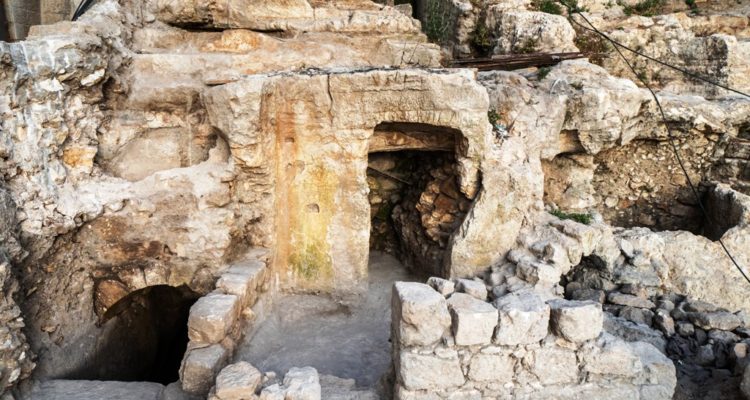Jerusalem Affairs Minister Zeev Elkin, who inaugurated the Western Wall Elevator Project, called the discoveries “truly exciting.”
By Debbie Reiss, World Israel News
Israeli archaeologists unearthed a ritual bath (mikveh) dating back to the late Second Temple period near the Temple Mount complex in Jerusalem while installing an elevator to provide handicap access, the Hebrew University of Jerusalem’s Institute of Archaeology said on Thursday.
The team, led by Michal Haber and Dr. Oren Gutfeld, also discovered a Roman-era pool and a byzantine lamp.
The ritual bath was discovered hewn inside the bedrock of a private, 1st-century villa. It features a vaulted ceiling and masonry typical of the Herodian period, and is likely to have been used by a priestly family.
The villa is located atop a cliff in the “Upper City”— a term used by historian Josephus Flavius to describe the area of Herod’s City, which housed Jerusalem’s elites.
“While several other ritual baths have been unearthed in the area, the importance of this particular discovery stems from its striking proximity to the Temple Mount—raising the question of who lived in this grand villa on the eve of the city’s destruction. It may well have been a priestly family,” Haber said.
Excavations began in February, when plans to build wheelchair access to the Western Wall were approved.
The Israel Antiquities Authority said it will preserve the site by incorporating it into the elevator complex.
The elevator excavations unearthed additional artifacts spanning the Second Temple, Roman-Byzantine, and Ottoman periods, including a network of plastered pools and channels. Among the finds were a water cistern holding the remains of dozens of pots, many of which were intact, a section of the “Lower Aqueduct” that transported water from Solomon’s Pools near Bethlehem all the way to the Temple Mount in Jerusalem, and an industrial pool built by soldiers of Rome’s Tenth Legion who were stationed in Jerusalem in 130 CE.
Jerusalem Affairs Minister Zeev Elkin, who inaugurated the Western Wall Elevator Project, called the discoveries “truly exciting.”
“They provide proof of a continuous Jewish presence in Jerusalem for millennia. Under my leadership, Israel’s Ministry of Jerusalem Affairs and Heritage will continue to preserve and develop Jerusalem’s rich Jewish past and transform the capital into a modern, innovative city,” he said.
According to Gutfeld, the sheer number of water channels, cisterns, and pools discovered in the area reflects the “central role played by Jerusalem’s water supply throughout the ages.”





